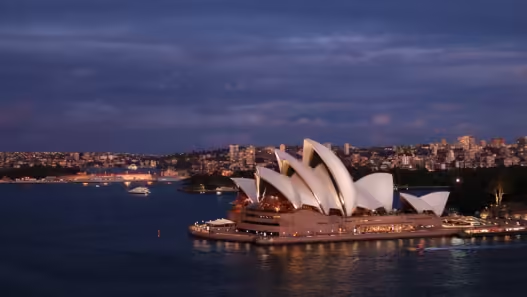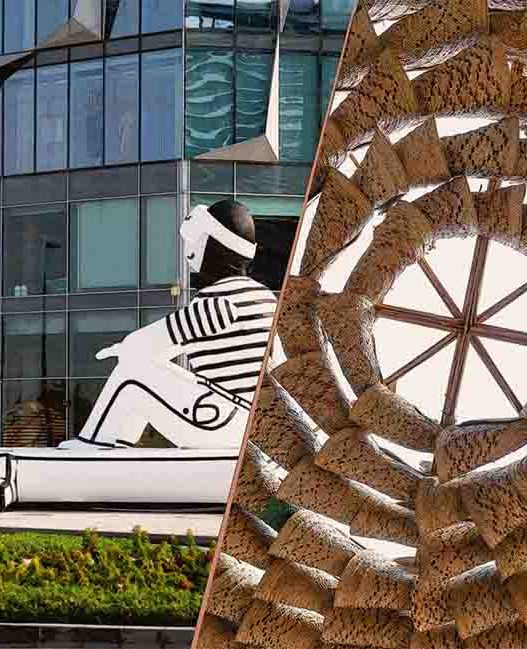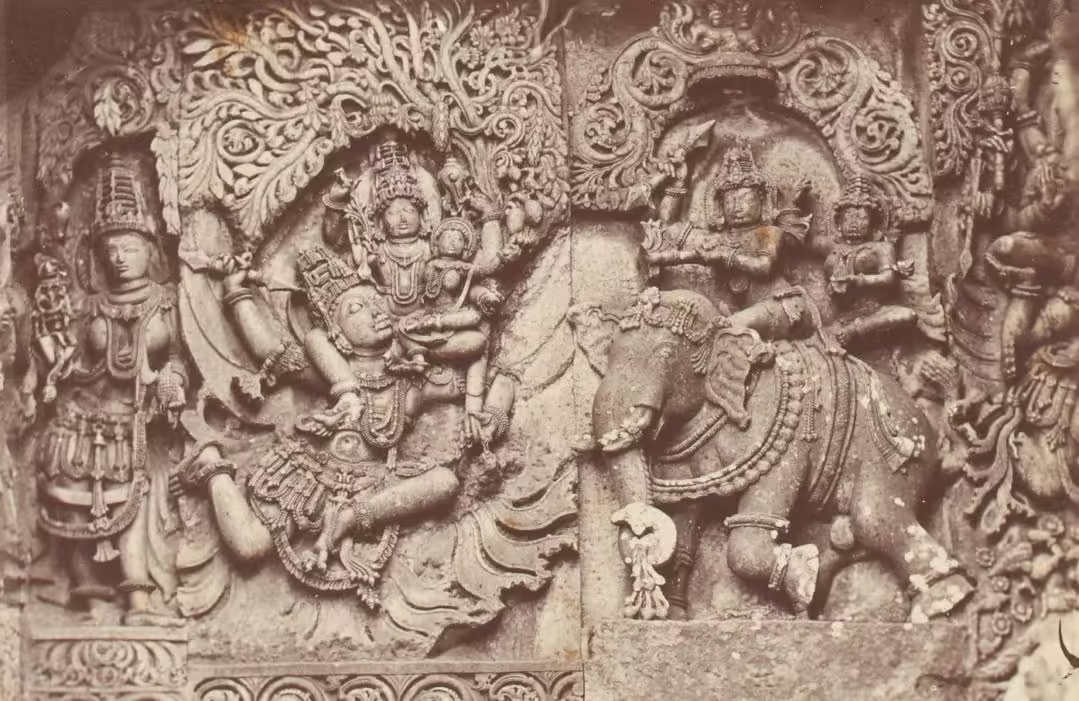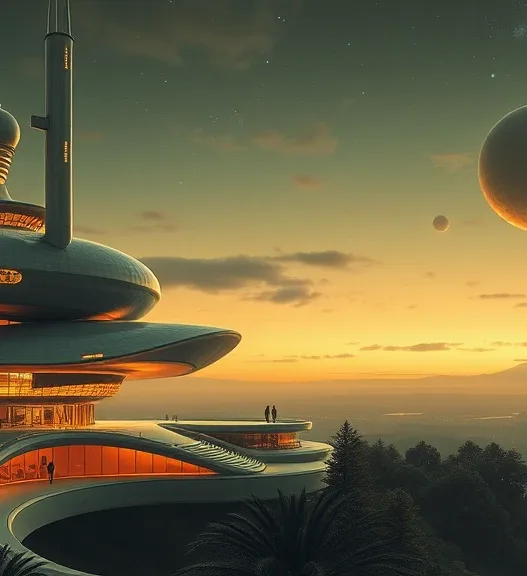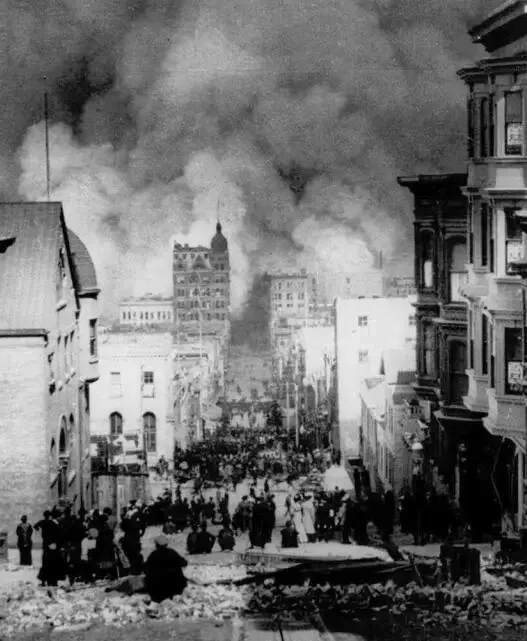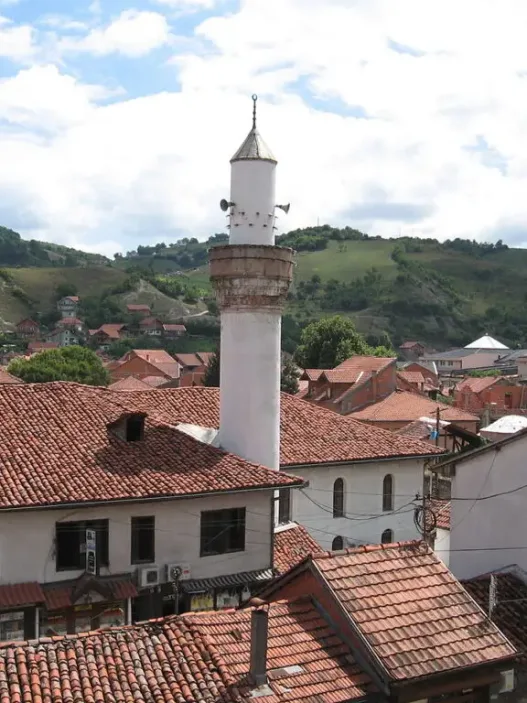Warsaw, the capital of Poland, stands as a living testament to architectural resilience and innovation. The city’s skyline is a rich tapestry woven from the threads of history, culture and modernity. The city’s architecture reflects its turbulent past, including periods of destruction and rebirth, and its aspirations for the future. This unique mix creates a distinctive urban identity that is both historically rich and forward-looking. Warsaw’s architectural landscape invites discovery, revealing stories and experiences that resonate with locals and visitors alike.
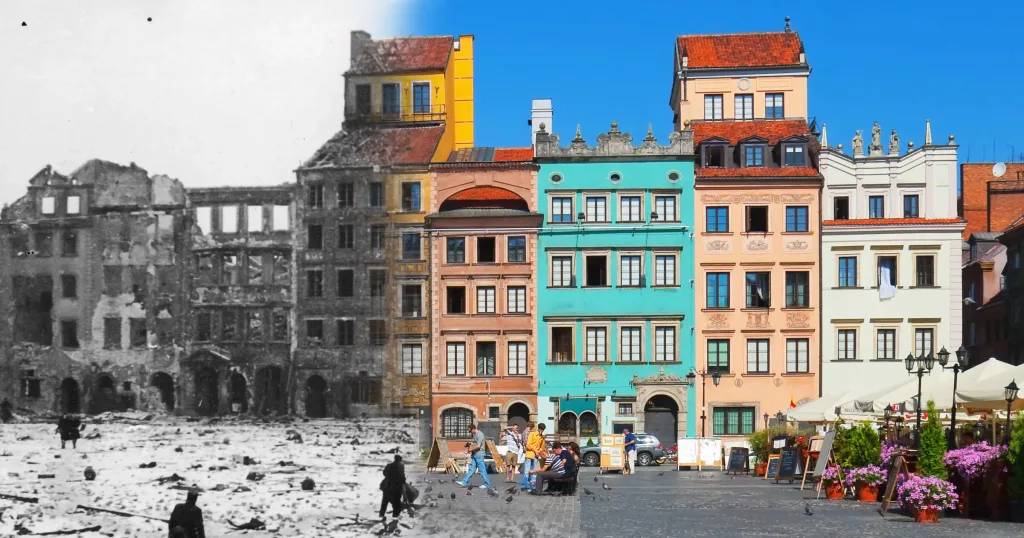
THistorical Context
Warsaw’s architectural journey is deeply rooted in history. Founded in the 13th century, the city has evolved through various architectural styles, including Gothic, Renaissance, Baroque and Neoclassical. Each era has left its mark and contributed to a distinct cultural heritage. However, the most important chapter in this narrative is the aftermath of the Second World War. The war devastated the city, with around 85% of the buildings destroyed. In the face of this devastation, the Polish people made an extraordinary effort to rebuild not only their homes but also their identity. The meticulous restoration of the Old Town, a UNESCO World Heritage site, demonstrates this commitment and respect for history.
The Importance of Architecture in Urban Identity
Architecture plays an important role in shaping a city’s identity by acting as a mirror reflecting the values, aspirations and history of a society. In Warsaw, the blending of old buildings with modern designs embodies the city’s spirit of resilience and harmony. Buildings are not just functional spaces; they represent the stories of the people who live in them. For example, the Palace of Culture and Science, a gift from the Soviet Union, has become a symbol of both pride and controversy, representing the complex relationship between Warsaw’s past and its future. Thus, architecture in Warsaw is more than aesthetics; it is an important aspect of collective memory and identity.
The Impact of War on Architectural Development
The impact of the war on Warsaw’s architectural development cannot be overstated. The devastation during the Second World War forced architects and planners to rethink urban design. Post-war reconstruction was not only a physical reconstruction, but also a philosophical shift. Modernist principles prioritizing functionality and efficiency came to the fore. However, there was also a strong desire to preserve historical elements, leading to a unique juxtaposition of styles. For example, the reconstruction has combined innovation and tradition by including not only modern buildings, but also efforts to restore historic facades. This dual approach creates a dynamic dialog between old and new.
Contemporary Trends in Warsaw Architecture
In recent years, Warsaw has embraced contemporary architectural trends that reflect global influences while remaining connected to local culture. Sustainable design has become an important focus, with green spaces and environmentally friendly materials playing a central role in new developments. Architects are increasingly experimenting with innovative forms and technologies, creating stunning buildings that capture the imagination. The Museum of Modern Art, for example, serves as a cultural hub that connects the past to the artistic expressions of the present while showcasing contemporary design. This forward-thinking approach is not just about aesthetics; it also addresses the needs of a growing urban population in an environmentally sensitive way.
Overview of Important Architectural Masterpieces
Warsaw is home to many architectural masterpieces that highlight its rich heritage and modern ambitions. The Royal Castle, meticulously restored after its destruction, stands as a symbol of Polish identity and history. Meanwhile, the Warsaw Tower, a striking addition to the skyline, represents the city’s evolving role as a business and cultural center. The Copernicus Science Center, with its dynamic and interactive design, exemplifies the city’s commitment to education and innovation. Each of these buildings tells a story, contributing to the ongoing narrative of Warsaw as an ever-evolving city where history and modernity coexist in harmony.
All in all, Warsaw’s architectural landscape is a fascinating exploration of resilience, identity and innovation. A city that honors its history while boldly looking to the future, inviting all who walk its streets to engage with its rich tapestry of stories.
# Warsaw, Poland: Rebuilding History with a Contemporary Architectural Vision
Warsaw, the capital of Poland, exhibits an extraordinary blend of history and modernity. The city has survived countless challenges, including wars and occupations, but it remains a testament to resilience and creativity. Among its most iconic buildings, the Royal Castle serves as a powerful symbol of this spirit.
The Royal Castle A Symbol of Resilience
Historical Background
The Royal Castle has a rich history dating back to the 14th century. Originally built as a residence for Polish kings, the castle later became an important political center. The castle witnessed countless historical events, from royal ceremonies to political decisions that shaped the nation. However, during the Second World War, the castle faced destruction. The Nazi occupation led to the systematic destruction of the castle and by the end of the war it was in ruins. This tragic past makes its story one of resilience and renewal.
Architectural Styles and Influences
The Royal Castle is an architectural marvel that embodies a variety of styles, particularly Baroque and Gothic influences. Its elegant exterior features striking red brick walls and ornate details that reflect the splendor of its royal past. The interior is equally impressive, with lavishly decorated rooms that emphasize the opulence of the Polish monarchy. Notable spaces include the Throne Room, where intricate frescoes and gold accents create a sense of grandeur. The blending of styles illustrates the evolution of architecture over the centuries, summarizing the cultural changes that have shaped Polish history.
Restoration Efforts after the Second World War
After the war, the restoration of the Royal Castle became a monumental task. Driven by a desire to reclaim its national identity, the Polish government initiated extensive reconstruction work in the 1970s. Architects and historians worked diligently, using old photographs and documents to guide the reconstruction. The project was not just about rebuilding the walls; it was about revitalizing a lost piece of Polish heritage. The completed restoration has allowed the castle to once again serve as a symbol of national pride and historical continuity.
Cultural Significance Today
Today, the Royal Castle stands out not only as a historical site but also as a cultural center. It houses a museum showcasing an impressive collection of art, including paintings, tapestries and furniture from various periods. The castle regularly hosts exhibitions, concerts and cultural events, bridging the gap between the past and contemporary society. This vibrant cultural life enhances its role as a meeting place, attracting locals and tourists looking to connect with Poland’s rich heritage.
Visitor Experience and Accessibility
Visiting the Royal Castle is an enriching experience that allows guests to step back in time. Guided tours provide information on the history, architecture and art of the castle, making it a fascinating visit for history buffs and casual tourists alike. Accessibility has been significantly improved with efforts made to ensure that visitors of all abilities can enjoy the site. The castle’s central location in Warsaw makes it easily accessible and invites everyone to discover its beauty and significance.
In conclusion, the Royal Castle in Warsaw is more than just an architectural landmark, it represents the resilience of a nation. With its historical depth, architectural splendor and cultural vibrancy, it invites visitors to appreciate the complex fabric of Poland’s past and celebrate its dynamic present.
# Warsaw, Poland: Rebuilding History with a Contemporary Architectural Vision
Warsaw, the capital of Poland, is a city of resilience and transformation. The coexistence of architectural wonders from various eras is a testament to the interplay between history and modernity. Among these buildings, the Palace of Culture and Science stands out as an important symbol of the city’s complex past and dynamic present.
Palace of Culture and Science: A Soviet Legacy
Architectural Design and Features
Completed in 1955, the Palace of Culture and Science is a striking example of Socialist Realism, a style that aims to convey the ideals of socialism through art and architecture. Designed by Soviet architect Lev Rudnev, this colossal structure towers over Warsaw and is the tallest building in Poland with a height of many meters.
The design is characterized by an eclectic mix of styles, combining elements of neoclassicism, art deco and modernism. The exterior is adorned with intricate details, including sculptures and reliefs celebrating Polish culture and history. The building’s imposing tower, a prominent feature of the skyline, adds to its splendor. The palace houses numerous venues designed to accommodate a variety of cultural and educational initiatives, including theaters, cinemas, and exhibition halls.
Controversies Surrounding Its Construction
The construction of the Palace was not without controversy. “A gift of the Soviet people” the palace symbolizes both the oppression and the cultural aspirations of the time. Many Poles saw the building as a stark reminder of Soviet domination, and resentment was further fueled by the forced labor of Polish workers in its construction.
The debate over the building’s place in Warsaw’s architectural heritage continues. Some see the building as a relic of a painful past, while others appreciate its historical significance and the cultural activities it fosters. This duality reflects Warsaw’s wider struggle to reconcile its historical narrative with its aspirations for the future.
Role in Modern Warsaw
Today the Palace of Culture and Science plays a multifaceted role in the life of Warsaw. It bridges the gap between past and present, acting as a central hub for cultural activities and public events. Home to numerous institutions, including theaters, museums and universities, the building has become a vibrant center of education and creativity.
Moreover, the Palace has become a symbol of Warsaw’s resilience and adaptability. As the city continues to evolve, the building serves as a reminder of the complex history that has shaped its identity. It stands not only as a monument to the past, but also as a venue for contemporary cultural expression, encouraging dialogue between residents and visitors alike.
Events and Activities Organized
The Palace of Culture and Science hosts a wide range of events catering to a variety of interests. From international conferences to art exhibitions and concerts, the building is a melting pot of ideas and cultures. In particular, it hosts the Warsaw Book Fair, which attracts literature enthusiasts from around the world and highlights the city’s literary heritage.
The Palace also offers guided tours that provide insight into its historical significance and architectural features. These tours allow visitors to appreciate not only the splendor of the building, but also the stories that unfold within its walls. The rooftop observation deck offers breathtaking views of Warsaw, further cementing its status as a must-visit landmark.
Future Prospects for the Building
Looking to the future, the future of the Palace of Culture and Science is a subject of ongoing debate. As Warsaw continues to modernize, there are renovation plans that aim to increase its functionality while preserving its historical essence. These updates may include improved accessibility and technological integration to better serve the community and visitors.
The building’s role as a cultural center is likely to expand, with a focus on supporting contemporary art and fostering international cooperation. As Warsaw seeks to meet the challenges of modern urban development, the Palace of Culture and Science stands as a critical piece of the architectural puzzle that embodies the city’s journey from a turbulent past to a hopeful future.
Ultimately, the Palace of Culture and Science is much more than a building; it is a living piece of history that continues to evolve. Its architectural splendor, complex heritage and vibrant role in contemporary life reflect the spirit of Warsaw – a city looking to new horizons while embracing its past.
# Warsaw, Poland: Rebuilding History with a Contemporary Architectural Vision
Warsaw Uprising Museum: A Modern Tribute
The Warsaw Uprising Museum stands as a powerful symbol of resistance and remembrance, dedicated to the memory of the brave individuals who fought during the Warsaw Uprising of 1944. This extraordinary institution not only commemorates an important moment in Polish history, but also serves as a beacon of contemporary architectural innovation. The museum’s design and exhibitions intertwine to create an immersive experience that inspires future generations while educating visitors about the past.
Concept and Design Philosophy
The concept behind the Warsaw Uprising Museum is based on the desire to convey the solemnity and heroism of the uprising while evoking a sense of connection with modern Poland. Embracing transparency and openness, the design philosophy invites visitors to engage not only with the historical narrative, but also with the emotional weight of the events. The architects aimed to create a space that reflects both the chaos and the courage of the uprising, embodying a dialogue between history and contemporary society. The layout of the museum guides visitors through a journey, allowing them to experience the story of the uprising’s unfolding in a dynamic and engaging way.
Architectural Elements and Materials
The architectural design of the museum is remarkable for its bold forms and innovative use of materials. The building’s façade is a combination of concrete, glass and steel, symbolizing the resilience of the Polish people. The use of raw concrete reflects the harsh realities of war, while the large glass facades create a sense of openness and accessibility, drawing the public into the narrative. Inside, the spatial organization is both functional and emotional; high ceilings and spacious galleries evoke a sense of grandeur and solemnity. The interplay of light and shadow further enhances the experience, allowing visitors to feel the weight of history as they move through the space.
The Role of Technology in Exhibitions
Technology plays a crucial role in the Warsaw Uprising Museum, transforming traditional exhibitions into fascinating and informative interactive experiences. State-of-the-art multimedia installations, including virtual reality and augmented reality components, allow visitors to immerse themselves in the historical context of the uprising. These technologies bring the rebels’ stories to life, allowing visitors to walk through key moments and understand the complexity of the conflict. Interactive touch screens and audio guides provide additional layers of information, allowing each visitor to interact with the material in a way that resonates personally.
Visitor Engagement and Education Programs
The museum is not just a space for reflection; it actively engages visitors through a variety of educational programs and workshops. School groups and families are encouraged to participate in guided tours, storytelling sessions, and hands-on activities to better understand the significance of the uprising. Special exhibitions and lectures featuring historians and uprising veterans bridge the past and present, fostering a sense of community and dialogue. The museum provides a platform for discussion and learning, ensuring that history lessons remain relevant and accessible to all.
Recognition and Awards
Since its opening, the Warsaw Uprising Museum has received numerous accolades for its architectural excellence and innovative approach to historic preservation. Recognized both nationally and internationally, the museum has received awards for its design, educational initiatives and role in promoting cultural heritage. These awards underscore the museum’s importance as a leading institution in the field of contemporary architecture and social memory. The museum’s success has inspired similar projects in Poland and beyond, highlighting the transformative power of architecture to tell the stories of our past.
Ultimately, the Warsaw Uprising Museum is more than a tribute to a historical event; it is a masterful blend of architecture, technology and education. By honoring the sacrifices of those who fought for freedom, it provides a better understanding of Poland’s history and invites visitors to reflect on the values of courage and resilience that continue to resonate today.
# Warsaw, Poland: Reconstructing History with a Contemporary Architectural Vision
Warsaw, the capital of Poland, is a city that beautifully embodies the resilience of its people and the evolution of its landscape. Badly damaged during the Second World War, Warsaw has not only been rebuilt but has also redesigned its architectural presence. The juxtaposition of historic buildings with modern designs creates a vibrant tapestry that tells the story of a city in transition. This survey of modern developments highlights how Warsaw is integrating the old with the new, showcasing key projects, the companies behind them, sustainability efforts, urban planning and community reactions.
Modern Developments: Integrating the Old with the New
As Warsaw continues to grow, its modern developments reflect a deep respect for history while embracing innovation. The city is a canvas where contemporary architecture stands side by side with restored historic landmarks, creating a dialog between past and present. This integration is not just aesthetic; it represents a philosophical approach to rebuilding a city that was once in ruins.
The essence of modern architecture in Warsaw lies in its ability to preserve the spirit of the city while pushing boundaries. Buildings such as the Museum of the History of Polish Jews, designed by Finnish firm Lahdelma & Mahlamäki, not only honor the memory of those who lived in the Jewish community, but also offer contemporary design elements that invite interaction and exploration. This blending of styles creates a unique sense of place, allowing residents and visitors alike to appreciate both the history and forward-thinking nature of the city.
Notable Contemporary Projects
Among the major contemporary projects in Warsaw, the Varso Tower stands out as a symbol of the city’s ambition. With a height of over a meter, it is the tallest building in the European Union. Designed by architecture firm Foster + Partners, the tower features a glass façade that reflects the surrounding skyline, creating a new landmark while blending in with the city’s historic context. The building includes green spaces and public spaces, encouraging community interaction and providing a modern touch to the urban environment.
Another important project is the Koneser Praga Center, which transforms the former vodka factory into a vibrant mixed-use space combining residential, commercial and cultural functions. This redevelopment not only preserves the industrial heritage of the site, but also creates a vibrant center that attracts locals and tourists. These projects show that contemporary architecture in Warsaw is not only about new buildings, but also about revitalizing existing spaces and strengthening social connections.
Architecture Firms Leading Change
The various architectural firms at the forefront of Warsaw’s transformation each bring a unique vision to the table. Studio Zaha Hadid, known for its futuristic designs, is making a name for itself with projects that showcase innovative techniques and materials, such as the 3D printed pavilion in the city center. Local firms such as BBGK Architekci have also been instrumental in this change. They focus on creating spaces that resonate with the city’s historic context while meeting modern needs. Their approach often reflects a deep understanding of Warsaw’s cultural heritage, ensuring that new developments enhance rather than overshadow the historical narrative.
These firms don’t just shape buildings; they create experiences that respect the past while embracing the future. His work plays an important role in defining Warsaw’s architectural identity, making it a dynamic place to live and work.
Sustainability in Modern Design
Sustainability is a critical aspect of modern architectural practice in Warsaw. With increasing awareness of environmental issues, architects are incorporating sustainable elements into their designs. Green roofs, energy-efficient systems and the use of sustainable materials are becoming standard features in new developments.
The Warsaw University of Technology Library is a prime example of this commitment to sustainability. Its green roof not only provides insulation, but also serves as a public garden that promotes biodiversity in the urban environment. Such designs demonstrate how contemporary architecture can contribute to ecological goals while improving the quality of life of urban residents.
Furthermore, the integration of public transportation and pedestrian-friendly spaces into urban planning reflects a broader commitment to reducing the city’s carbon footprint. As Warsaw continues to develop, a focus on sustainability ensures that growth does not harm the environment.
Public Spaces and Urban Planning
Public spaces play an important role in Warsaw’s urban landscape. The city has embraced the idea that these spaces should be accessible and inviting, encouraging social interaction and civic engagement. Projects such as the revitalization of the Vistula Boulevards have transformed neglected waterfront areas into vibrant spaces for recreation and entertainment, featuring walking paths, parks and cafés.
Urban planning in Warsaw is increasingly focused on creating multifunctional spaces that serve different needs. This approach not only enhances the urban experience, but also fosters a sense of ownership in the community. Integrating art installations and cultural events into public spaces encourages residents to connect with their surroundings and each other, making the city a more cohesive and vibrant place to live.
Community Responses and Adaptations
The community’s reaction to modern developments in Warsaw has been largely positive, although not without its challenges. Many residents appreciate the revitalization of their neighborhoods and the introduction of modern conveniences. However, there are also concerns about gentrification and the preservation of cultural identity.
Community involvement in the planning process has become essential. Architects and urban planners are increasingly involving local people in discussions about new projects, ensuring that developments reflect the needs and aspirations of the community. This collaborative approach allows for adaptations that honor the city’s rich history while accommodating modern lifestyles.
As Warsaw continues to grow and change, the dialog between its past and present remains important. The integration of modern developments with historical heritage not only enriches the architectural landscape, but also strengthens the community’s connection to its city. Through thoughtful design, sustainable practices and active community engagement, Warsaw stands as a testament to the power of architecture in shaping a city’s identity and future.
# Warsaw, Poland: Rebuilding History with a Contemporary Architectural Vision
Conclusion The Future of Warsaw Architecture
As Warsaw stands at the intersection of its rich history and dynamic future, the city’s architecture reflects a unique narrative of resilience and transformation. This summarizes the lessons learned from the past, the important role architecture plays in cultural identity, and the expected trends that will shape the city’s skyline in the coming years.
Lessons from the Past
Warsaw’s architectural journey is a testament to the power of resilience. Almost completely destroyed during the Second World War, the city has risen from the ashes with a renewed spirit, meticulously rebuilding its historic buildings while integrating modern elements. This history of upheaval and rebirth offers important lessons in adaptation and community engagement. The painstaking efforts to restore the Old Town, a UNESCO World Heritage Site, highlight the importance of preserving cultural heritage even in the midst of modernization. These experiences remind us that architecture is not just about buildings, but also about the stories they tell and the memories they preserve.
The Role of Architecture in Cultural Identity
Architecture is a vital expression of cultural identity and acts as a canvas reflecting the values, aspirations and historical experiences of a society. In Warsaw, the mix of Gothic, Renaissance, Baroque and modern styles illustrates the city’s diverse influences and adaptable nature. Contemporary projects such as the Museum of the History of Polish Jews go beyond traditional aesthetics, connecting with the past while encouraging dialogue about the future. With its striking design and interactive exhibits, this museum not only honors the rich history of the Jewish community, but also invites visitors to reflect on broader themes such as tolerance and coexistence. Through such architectural endeavors, Warsaw reinforces its unique identity on the global stage.
Forecasts for Architectural Trends
Looking ahead, several architectural trends are likely to emerge that will shape Warsaw’s skyline. Sustainable design practices will continue to gain importance, reflecting a global shift towards environmental responsibility. Innovations in green architecture, including energy-efficient buildings and urban green spaces, will contribute to a healthier urban environment. Furthermore, the use of smart technology in construction will increase functionality and connectivity, creating spaces that are both user-friendly and environmentally friendly. As Warsaw embraces these trends, it will not only improve its urban landscape, but also set a benchmark for other cities facing similar challenges.
Preservation and Innovation Debate
The ongoing debate between preservation and innovation is particularly relevant for Warsaw. While the city considers how to honor its historical roots, there is also a strong push for contemporary architectural expressions that resonate with the current generation. This tension often leads to creative solutions where modern designs complement historical contexts. The revitalization of the Vistula Boulevards, for example, beautifully illustrates this balance, blending leisure spaces with modern architectural elements while respecting the historical significance of the river. This dialogue between old and new is essential for fostering a vibrant urban environment that honors the past while embracing the future.
Final Thoughts on Warsaw’s Architectural Journey
Warsaw’s architectural journey is a remarkable narrative of survival, creativity and identity. As the city continues to evolve, it is determined to celebrate its heritage while exploring new horizons. The lessons learned from its turbulent past will inform future developments and ensure that architecture remains a powerful tool for storytelling and community building. Ultimately, Warsaw stands as a beacon of hope, showing how a city can honor its history and step boldly into the future, creating spaces that inspire future generations.









